Kesho Ido Wells
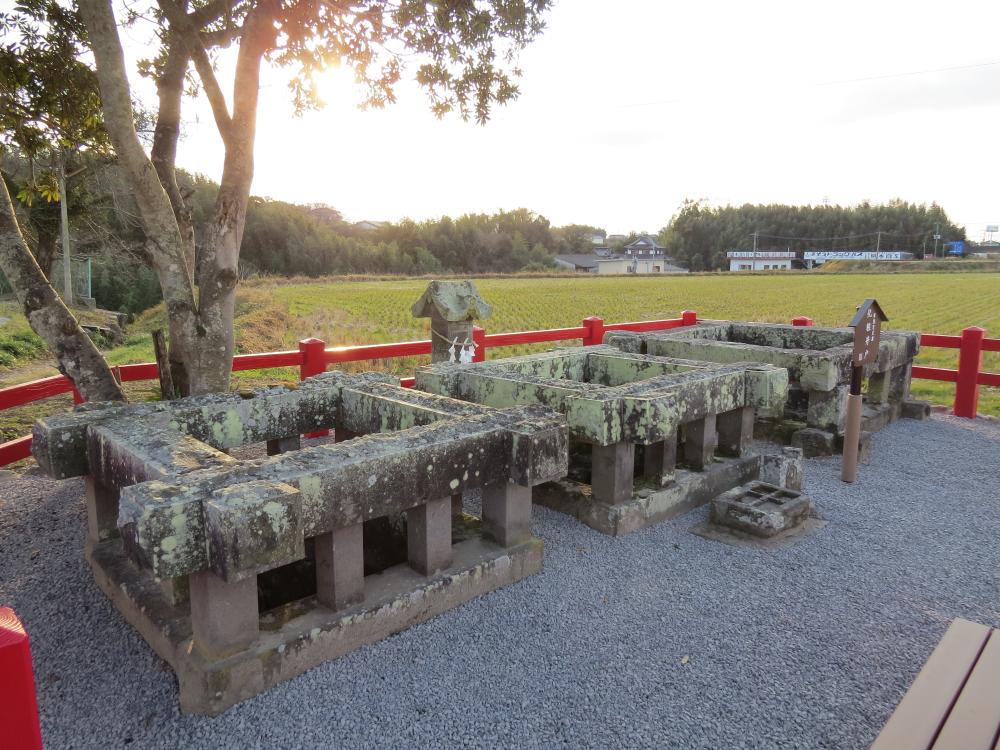
Kesho Ido Wells
The stone wells called Kesho Ido are believed to have been used by puppeteers to wash and dress wooden kugutsu puppets in preparation for religious rites. The kugutsu were then taken down the Chokushi Kaido Road to the nearby Hyakutai Jinja Shrine. There the puppets were used in ritual performances to pacify the spirits of the Hayato people from southern Kyushu who had rebelled against the Yamato court.
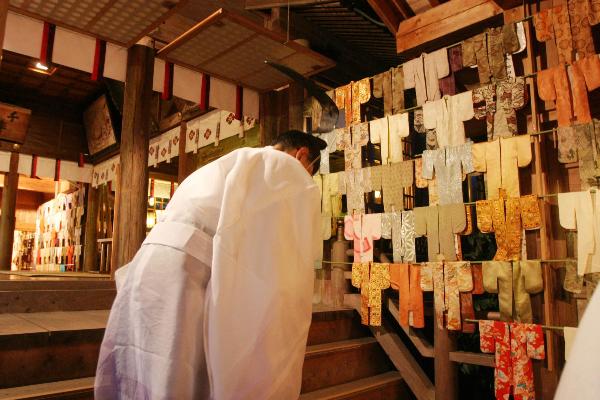
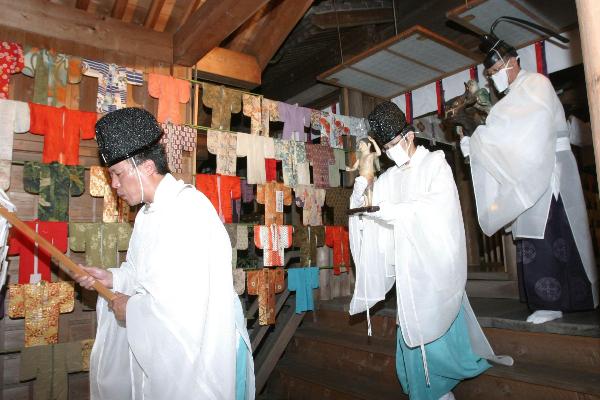
A ritual to air out kimono worn by kugutsu puppets (Hachiman Kohyo Jinja Shrine)
According to Usa Jingu shrine records, in 720 Yamato troops set forth to quell the Hayato Rebellion, accompanied by Hachiman who provided divine protection. The Hayato held out against the Yamato forces for some time, but the Yamato employed a distraction strategy that used kugutsu puppet performances. This caused the Hayato to lower their guard, resulting in their defeat.
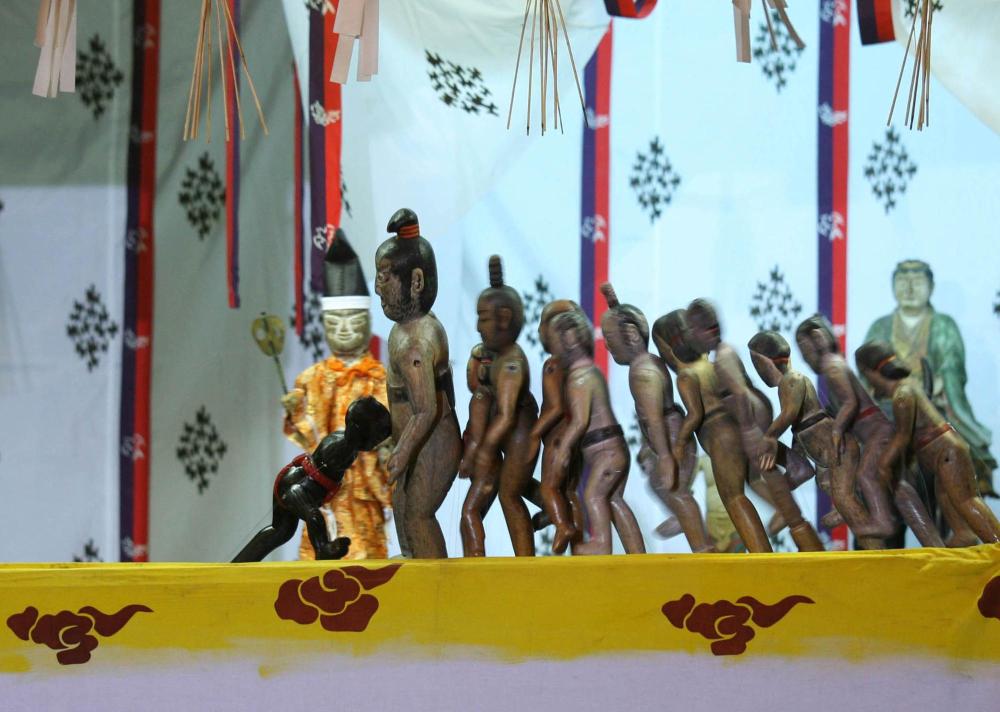
Kamizumo puppet wrestling between deities (Hachiman Kohyo Jinja Shrine)
After the rebellion was subdued, the Usa region was afflicted by famine and plague, which people attributed to the vengeful spirits of the Hayato. In compliance with an oracle from Hachiman, a hojo-e (“rite for the release of living beings”) was performed annually to atone for the killings and appease the restless spirits. It also became customary to put on a ritual performance using kugutsu puppets at Hyakutai Shrine. The tradition died out in Usa in the twentieth century, but it continues at two other Kyushu shrines: Hachiman Kohyo Jinja Shrine and Koyo Jinja Shrine.
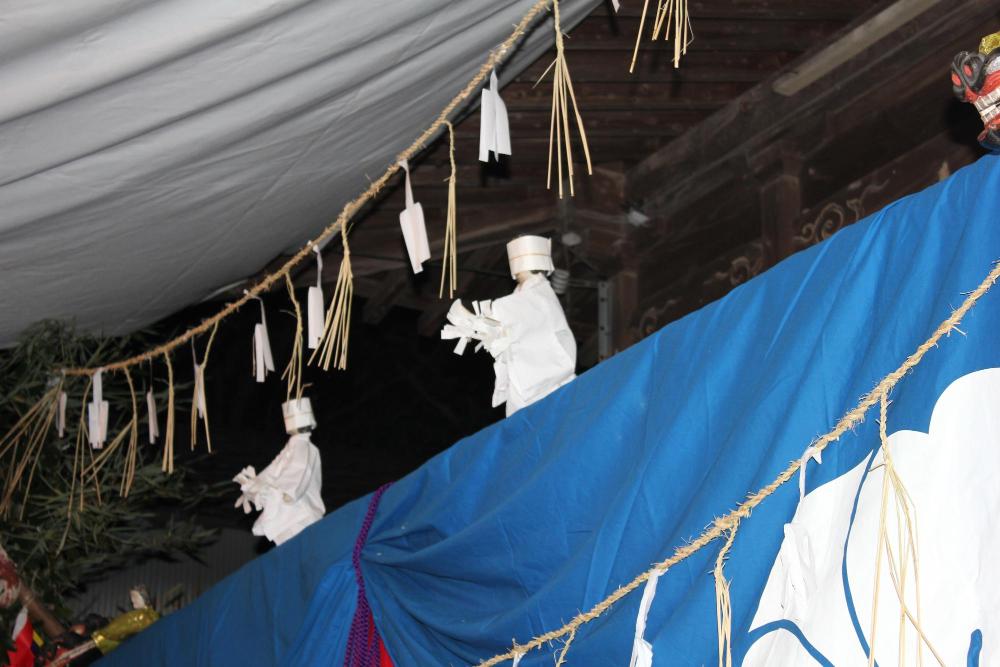
Kugutsu no Mai puppet performance (Koyo Jinja Shrine)
At present, there are three Kesho Ido Wells, but illustrations of the area from the nineteenth century depict only two. One of the original wells was filled in during the 1960s, but two more were soon built to replace it. The two newer wells were donations from parishioners of Hachiman Kohyo Shrine and Koyo Shrine. The original well (on the right) has various old carvings etched into the stone fencing, including dates from the late seventeenth century and names of priests and villagers who contributed to the construction. The Kesho Ido Wells are designated a Historic Site of Usa City.
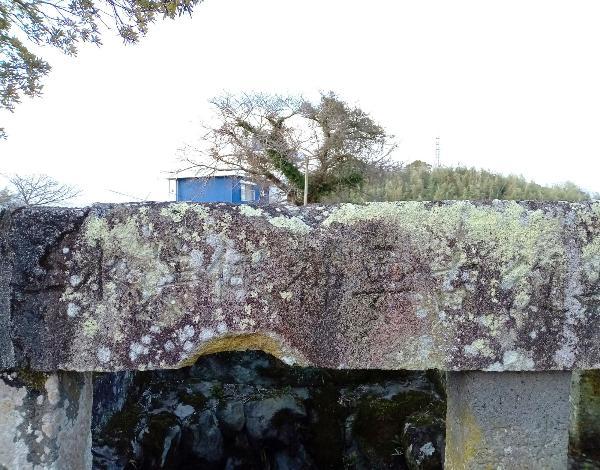
An engraving on the well curb referencing Koyo Jinja Shrine
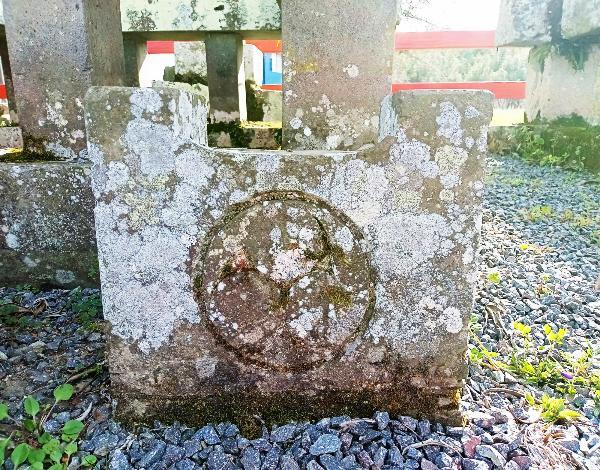
Mitsudomoe crest of Usa Jingu Shrine
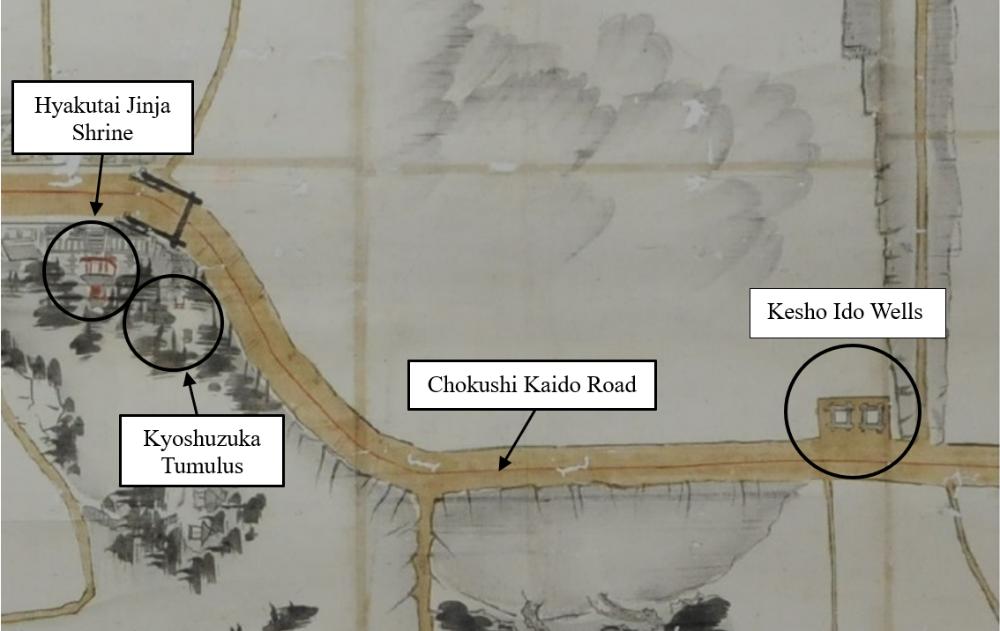
Map of the imperial messenger’s procession route showing Kesho Ido Wells (1864)

This English-language text was created by Japan Tourism Agency.
- ページに関する評価
-







更新日:2024年03月18日